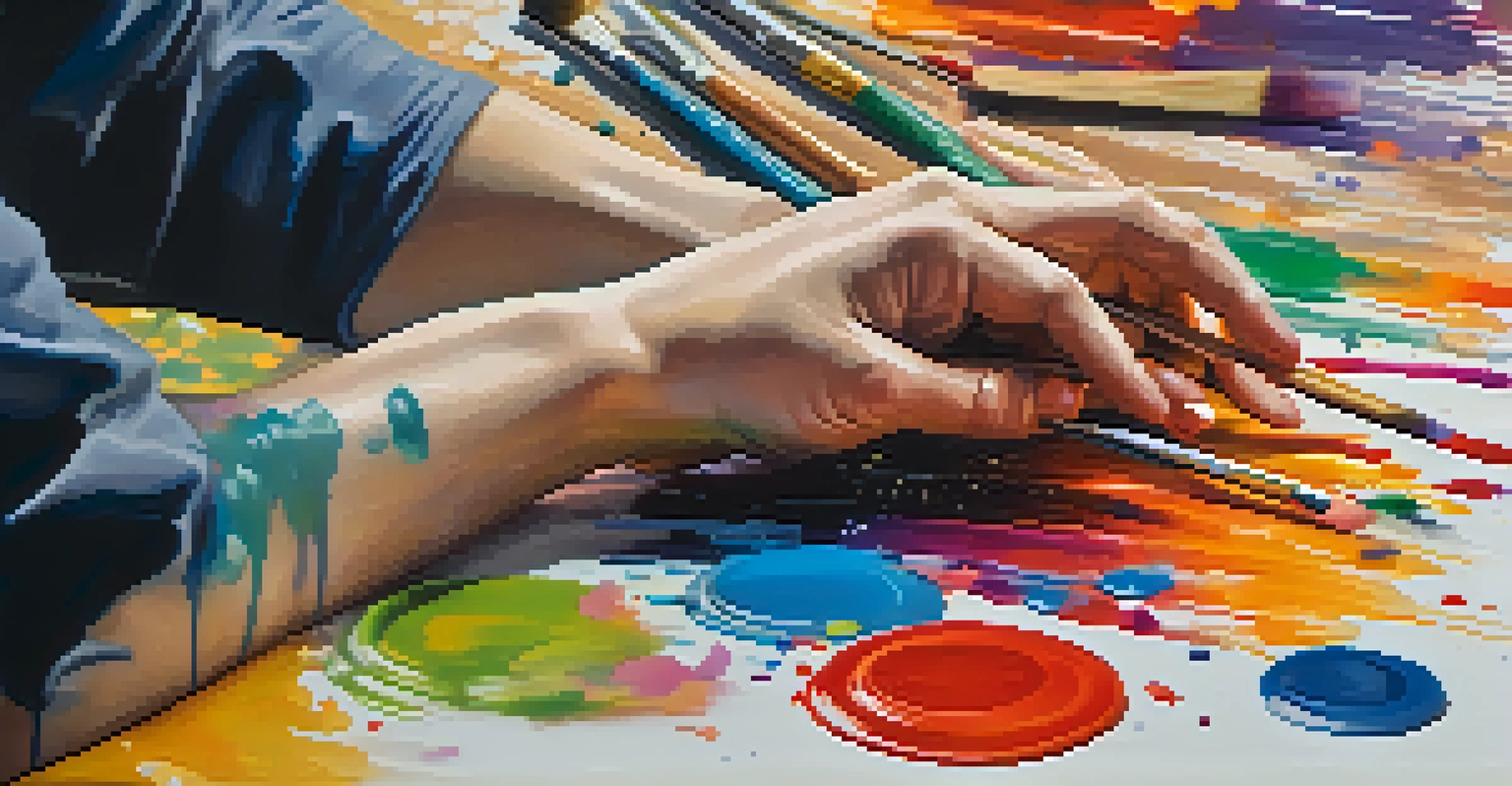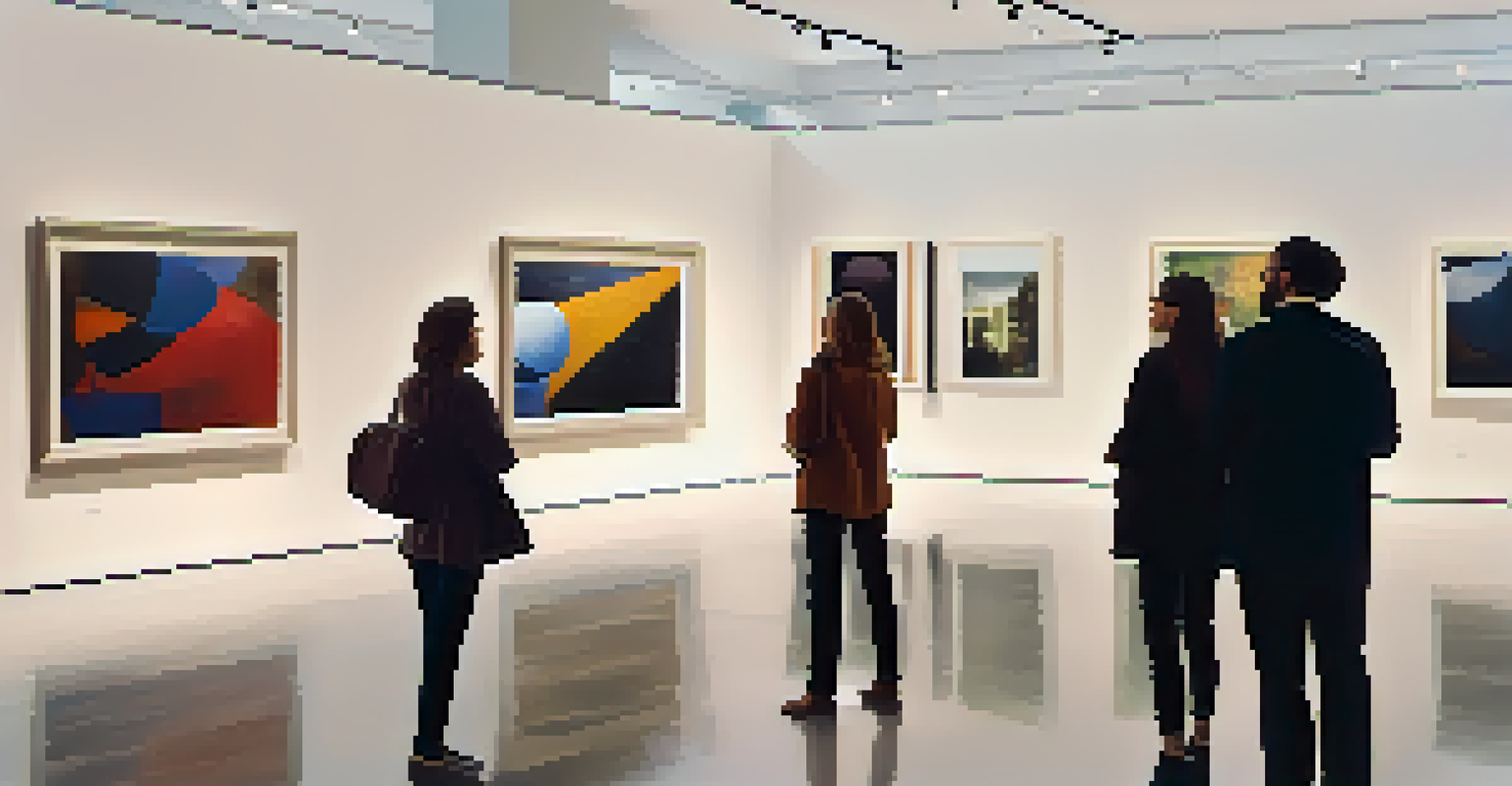Methodologies in Art Criticism: A Comparative Analysis

Understanding Art Criticism: A Foundation for Evaluation
Art criticism serves as a bridge between the artist's intent and the audience's experience. It provides a structured way to evaluate and interpret artworks, allowing viewers to appreciate deeper meanings. Understanding the basics of art criticism is crucial for anyone interested in engaging with art more meaningfully.
Art is not freedom from discipline, but disciplined freedom.
At its core, art criticism can be thought of as a dialogue, where critics and audiences converse about the value and significance of an artwork. This conversation often involves analyzing elements like technique, style, context, and emotional impact. By grasping these foundational concepts, one can begin to appreciate the complexities of different methodologies.
Related Resource
Ultimately, a solid understanding of art criticism prepares us to delve into the various methodologies that shape how we interpret and evaluate art. Each approach offers unique insights, encouraging diverse perspectives and enriching our overall experience.
Formalism: The Art of Aesthetics and Structure
Formalism focuses on the visual elements of an artwork, such as line, color, shape, and composition. Critics who adopt this methodology emphasize the aesthetics of a piece rather than its context or meaning. For example, a formalist might analyze a painting's balance and harmony without considering the artist's background or the historical moment.

This approach is particularly effective in appreciating works that prioritize form over narrative. By scrutinizing the intrinsic qualities of an artwork, formalism allows viewers to engage with art on a purely visual level. This is akin to enjoying a piece of music for its melody and rhythm without needing to understand the lyrics.
Art Criticism Enhances Understanding
Art criticism serves as a vital tool for evaluating and interpreting artworks, enriching the viewer's experience.
However, while formalism can reveal beautiful aspects of art, it may overlook crucial contextual elements that contribute to its significance. This is where blending methodologies can provide a more holistic view of a piece.
Contextualism: The Importance of Historical and Cultural Background
Contextualism emphasizes the significance of an artwork's historical, cultural, and social background. Critics using this approach argue that understanding the context in which a piece was created is vital for a full appreciation. For instance, examining the societal issues surrounding a piece can illuminate its deeper meanings.
The painter tries to master the art of looking at the world, whereas the critic tries to master the art of looking at the painting.
This methodology encourages viewers to consider factors like the artist's influences, the time period, and the prevailing cultural narratives. By placing an artwork within its broader context, critics can unlock layers of meaning that might otherwise go unnoticed. It's similar to reading a novel and discovering the author's life experiences and societal conditions that shaped the story.
Related Resource
Yet, while contextualism enriches our understanding, it can sometimes lead to overemphasis on external factors, potentially overshadowing the artwork itself. Thus, integrating this approach with others can create a more balanced critique.
Marxist Criticism: Art as a Reflection of Society and Class Struggle
Marxist criticism examines art through the lens of class struggle and economic conditions. This methodology posits that art reflects the socio-economic realities of its time, often revealing underlying power dynamics. For example, a Marxist critic might analyze how a painting critiques capitalist society or portrays class disparities.
This approach encourages a dialogue about how art can serve as both a product and a commentary on societal conditions. By understanding these relationships, viewers gain insights into how art can influence and be influenced by social change. It’s like looking at a mirror that reflects not just beauty but also the complexities of our world.
Methodologies Offer Diverse Insights
Different art criticism methodologies, such as formalism and contextualism, provide unique perspectives that deepen our engagement with art.
However, while Marxist criticism provides a powerful framework, it can sometimes narrow the focus to socio-economic factors, inadvertently overlooking aesthetic qualities. Combining this perspective with others can yield a richer understanding of art's multifaceted nature.
Feminist Criticism: Challenging Gender Norms Through Art
Feminist criticism explores how gender influences the creation and interpretation of art. This methodology seeks to uncover the ways in which women artists have been historically marginalized and how their work challenges traditional gender roles. For instance, a feminist critic might highlight how a piece subverts stereotypes or addresses issues of femininity.
This approach not only examines the role of women in art but also critiques how male-dominated narratives have shaped art history. By highlighting women’s contributions and perspectives, feminist criticism aims to create a more inclusive understanding of art. It’s like shining a spotlight on voices that have long been in the shadows.
Related Resource
While feminist criticism enriches our understanding of gender dynamics, it also faces challenges in balancing its focus on gender with other intersecting identities. Merging feminist perspectives with other methodologies can foster a more comprehensive critique.
Psychoanalytic Criticism: The Inner Workings of the Mind and Art
Psychoanalytic criticism explores the relationships between art and the unconscious mind. Drawing from the theories of Freud and Jung, this methodology examines how an artist's psyche influences their work and how viewers' subconscious reactions shape their interpretations. For example, a psychoanalytic critic might analyze symbols in an artwork that reflect repressed emotions or desires.
This approach encourages a deep dive into the psychological implications of art, revealing how personal and collective unconsciousness can manifest in creative expression. It's much like peeling back the layers of an onion to uncover hidden truths beneath the surface. By understanding these layers, we can engage with art on a more profound level.
A Holistic Approach is Key
Embracing a multifaceted approach to art criticism allows for a more comprehensive appreciation of the complexities within artworks.
However, while psychoanalytic criticism offers valuable insights, it can risk overemphasizing psychological narratives at the expense of broader contextual factors. Combining this methodology with others can lead to a more nuanced understanding of an artwork.
Conclusion: Embracing a Multifaceted Approach to Art Criticism
As we’ve explored, various methodologies in art criticism each bring unique perspectives and insights. From formalism to feminist criticism, these approaches allow us to engage with artworks on multiple levels. Rather than viewing these methodologies as competing, it's beneficial to see them as complementary tools that enhance our understanding.
By embracing a multifaceted approach, we can appreciate the richness of art and the diverse narratives it encompasses. This holistic perspective encourages a deeper dialogue between the viewer, the artwork, and the artist, making art appreciation a more fulfilling experience. Just as different instruments create a symphony, combining methodologies can yield a harmonious understanding of art.

Ultimately, the world of art criticism is vast and varied, and there’s no one-size-fits-all approach. By remaining open to different methodologies, we can cultivate a more profound appreciation for the many ways art reflects and shapes our lives.